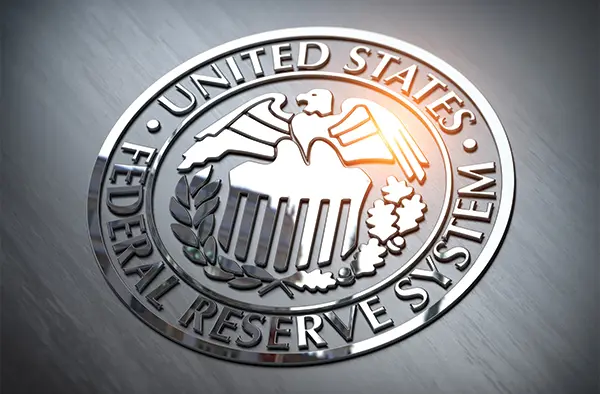What Investors Need to Know About Federal Reserve’s Money Tightening

February 28, 2025
The Federal Reserve's decision to tighten the money supply marks a significant shift in monetary policy that will influence a variety of sectors, from stock markets to real estate investments. This move, typically intended to curb inflation and stabilize the economy, has far-reaching effects on investors who need to adjust their strategies accordingly. In this article, we will examine the reasoning behind the Federal Reserve's decision to tighten the money supply and how it affects investment portfolios across different sectors.
Why is the Federal Reserve Tightening the Money Supply?Controlling Inflation: The primary reason the Federal Reserve tightens the money supply is to combat inflation. When inflation rises, the purchasing power of the dollar declines, making goods and services more expensive. By tightening the money supply, the Fed reduces the amount of currency circulating in the economy, thereby cooling down demand and stabilizing prices.
Interest Rates and Borrowing Costs: Another key mechanism the Fed uses to tighten the money supply is by raising interest rates. When the Fed hikes interest rates, borrowing costs for businesses and consumers increase. This typically slows down spending and investment, further curbing demand and inflationary pressures.
Maintaining Economic Stability: A tighter money supply is often used in response to an economy that is growing too quickly. Rapid economic growth can lead to asset bubbles—such as those seen in housing markets or stock markets—which, if left unchecked, can lead to a financial crisis. By tightening the money supply, the Fed ensures that the economy grows at a more sustainable pace, preventing over-exuberance and market instability.
The Federal Reserve’s decision to tighten the money supply has profound implications for a wide array of investments. Investors must stay informed and adjust their strategies accordingly to navigate the shifts in the market.
1. Stock Market ImpactTightening the money supply is often seen as a headwind for stock markets. When interest rates rise, investors typically shift their money out of riskier assets like stocks and into safer investments like bonds, which now offer more attractive returns due to the higher interest rates.
The tightening of the money supply also influences the real estate market. With higher interest rates, mortgage rates typically rise, making homeownership and real estate investments more expensive.
While higher interest rates generally cause stock market volatility, they can provide opportunities for fixed-income investors. As the Fed tightens the money supply, bond yields typically rise, providing a higher return for investors in government and corporate bonds.
The tightening of the money supply often strengthens the US dollar. This can have mixed implications for commodities and precious metals.
The US dollar is likely to strengthen as the Fed tightens the money supply. This is because higher interest rates attract foreign capital, seeking higher returns in US assets.
To successfully navigate the changes brought about by the Federal Reserve's tightening of the money supply, investors should consider adjusting their strategies based on the current economic climate.
Rebalance Portfolios: Investors may need to rebalance their portfolios by shifting assets from growth stocks to more stable, income-generating investments like dividend stocks, bonds, or real estate.
Look for Value Stocks: With tightening conditions, value stocks—those that trade for less than their intrinsic value—could outperform growth stocks. Investors may want to look for companies with strong fundamentals and low debt, as they are better positioned to weather higher borrowing costs.
Invest in Inflation-Protected Assets: While the Fed aims to control inflation, some sectors, such as energy, materials, and consumer staples, may continue to perform well despite monetary tightening. Treasury Inflation-Protected Securities (TIPS) are another way to hedge against inflation risks.
Diversify Across Asset Classes: A well-diversified portfolio can help investors weather the volatility of tightening monetary conditions. Allocating investments across stocks, bonds, commodities, and alternative assets like real estate can mitigate risks.
Monitor the Fed’s Signals: Investors should stay tuned to the Fed's guidance on future policy changes. The central bank’s stance on interest rates and inflation will offer important clues about market movements and the overall investment environment.

The role of U.S. investment policies in ensuring financial security and market resilience
U.S. investment policies play a crucial role in shaping financial stability by influencing capital markets, interest rates, and economic growth. Regulatory frameworks and government interventions determine risk levels, investor confidence, and long-term economic sustainability

Understanding the impact of interest rate changes on investment decision-making
Interest rate changes have a significant influence on investment strategies. Whether through the stock market, bonds, or real estate, shifts in rates affect asset prices, investor behavior, and portfolio diversification. Understanding these dynamics is essential for making informed, profitable investment decisions

Understanding how inflation trends influence U.S. investment strategies
Inflation trends play a critical role in shaping U.S. investment policies. From adjusting interest rates to influencing asset classes like bonds, equities, and real estate, inflation trends affect economic decisions across the country. Investors must stay informed about inflation to navigate investment policies effectively and protect their portfolios

Exploring the impact of government spending on market trends and investor behavior
Government spending plays a pivotal role in shaping investment markets. From fiscal stimulus packages to infrastructure investments, the allocation of government funds can drive market movements and influence investor sentiment. This article delves into the ways government spending impacts various sectors and markets, offering insights for investors

An in-depth look at the changes to capital gains tax laws and what investors should expect in 2025
As 2025 approaches, changes in capital gains tax laws could impact investment strategies for individuals and institutions. This article explores the key updates to tax policies and offers insights into how these changes may affect your investment portfolio

Understanding how Federal Reserve decisions impact investment trends and economic stability
The Federal Reserve plays a crucial role in shaping investment growth by adjusting interest rates, regulating money supply, and influencing market liquidity. Its policies determine the cost of borrowing, stock market trends, and overall economic expansion, making it a key driver in investment decision-making

An exploration of the impact of U.S. economic policies on investment strategies and trends
With shifting U.S. economic policies, investors are adjusting their strategies to respond to new market dynamics. This article explores the key policy changes and their influence on investment decisions

Understanding how tax policies shape investment strategies and financial growth
Tax regulations play a crucial role in determining investment returns by affecting capital gains, dividends, and corporate profits. Changes in tax laws influence investor behavior, asset allocation, and long-term financial planning, making it essential to stay informed about evolving policies

Learn how U.S. monetary policies influence investment decisions and market trends
U.S. monetary policies, driven by the Federal Reserve, play a significant role in shaping investment opportunities. Understanding interest rates, inflation control, and liquidity measures helps investors make informed decisions and optimize portfolio returns in varying economic climates
The Atlantic Daily
Get our guide to the day’s biggest news and ideas, delivered to your inbox every weekday and Sunday mornings. See more newsletters
.webp)
Ideas That Matter
Subscribe and support more than 160 years of independent journalism.
Subscribe